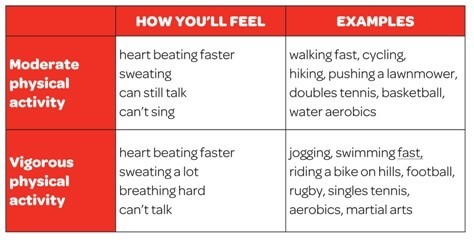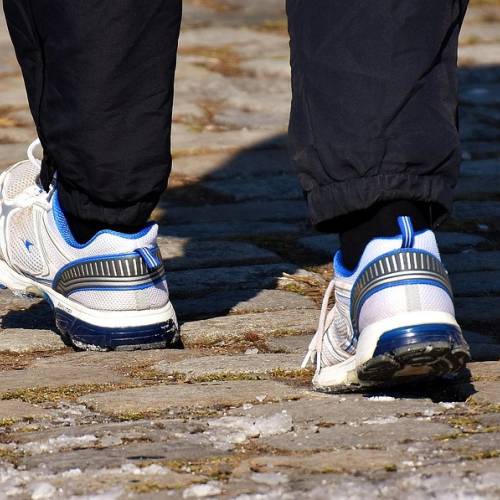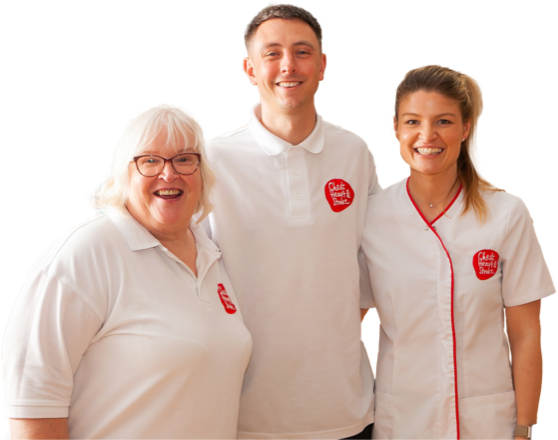By making simple decisions, such as taking the stairs instead of a lift, or walking instead of going in the car, you can start to improve your fitness and overall health.
Exercise can also reduce cholesterol and blood pressure, as well as helping you to maintain a healthy weight and improve your mental wellbeing.
Benefits of being active:
- Helps control your blood pressure
- Reduces bad cholesterol and increases good cholesterol
- Help control your blood glucose level
- Helps you maintain a healthy weight
- Helps you sleep better
- Helps overall health and wellbeing
Move more, sit less!
Being sedentary or physically inactive is when you don’t move for long periods of time, such as sitting down on the sofa or at work.
If you are not usually active, every little bit helps. You don't need to join a gym or run a marathon. It can include things like housework and gardening – it’s all about getting up and moving more.
Increasing the amount of physical activity you do on a day to day basis is very important. The body needs a good balance of all three types of exercise – cardiovascular, strength and flexibility exercises.
-
How much exercise do I need to get?
- Adults should aim for at least 150 minutes of moderate intensity physical activity or 75 minutes of vigorous intensity each week. Try to get at least 30 minutes of physical activity a day, rather than try and fit all 150 minutes into just the weekend. You don’t even need to do the entire 30 minutes in one go – it can be broken down into three smaller chunks to fit around your routine at home or work. Remember every minute counts.
- Children and young people should aim to have 60 minutes of physical activity every day. This includes play, walking, sports, dancing or swimming.
The amount of physical activity that you should do depends on your age:
- 5–17-year-olds: 60 mins of moderate and vigorous physical activity per day, or 300 minutes per week. Most activity should be aerobic but should also include activities that strengthen muscle and bone, every day.
- 18–64-year-olds: At least 150 minutes of moderate intensity aerobic physical activity throughout the week. Muscle–strengthening activities involving major muscle groups should be done on 2 or more days a week.
- 65 years old and over: Older adults should do at least 150 minutes of moderate intensity aerobic physical activity throughout the week. Older adults should perform physical activity to enhance balance and prevent falls.
- Muscle-strengthening activities involving major muscle groups should be done on 2 or more days a week.
- Everyone should move more and sit less.
What counts as moderate or vigorous physical activity?

-
Cardiovascular exercise
What is it? Cardiovascular exercise is exercise that increases the heartrate. It is also known as aerobic exercise.
Why? It keeps the muscles of the heart and lungs fit to keep your body working properly. It is often also split into moderate and vigorous physical activity.
Examples: Fast walking, swimming, running, fitness classes and playing sport.
Strengthening Exercises
What is it? Strength exercises (also known as resistance training) build up muscles which keep you strong and use up calories – this is known as your metabolism. Doing strength exercises means you burn more calories even when resting.
Why? Both cardiovascular and strength exercises will improve your cholesterol, boosting the good HDL cholesterol and lowering LDL cholesterol. Your heart will grow stronger and more efficient which will also help to lower your blood pressure. All these lower your risk of suffering a heart attack or a stroke.
Examples: Strength exercises can be as simple as getting up and down out of a chair or carrying heavy shopping bags. Or if you can do more, body weight exercises such as squats or press-ups and dancing, jumping and hopping all count, as well as lifting weights.
Flexibility Exercises
What is it? Flexibility exercises are the type of exercise that bend and stretch your joints, muscles, ligaments and tendons.
Why? Flexibility exercises are important to keep your joints and muscles supple, allowing you to do everyday tasks more easily. They are also good for posture which reduces aches and pains and can also help to improve breathing by opening up the chest muscles.
Examples: Yoga, Pilates, stretching exercises
Rest
Rest is just as important as physical activity. We should aim to get eight hours of sleep a night. This helps our bodies rest, recover and adapt to the training. Without enough rest, our bodies are prone to exhaustion and injury, which can undo all our hard work and prevent us from staying active.
-
When it comes to staying healthy, children learn best by example. They are more likely to be active if physical activity is incorporated as a normal part of family life.
Finding ways to get active as a family is a great way to look after your own and your children's health while also spending lots of fun quality time together. Activities like cycling, swimming, walking or hiking and active play are all great options.
Our Well Checks include a lifestyle assessment and give you the opportunity to speak to one of our qualified health promotion officers about any concerns you have around your physical activity levels, and receive personalised tips and advice.
Find out moreDownload our Physical Activity Factsheet:
-
Physical Activity FactsheetDownload pdf

